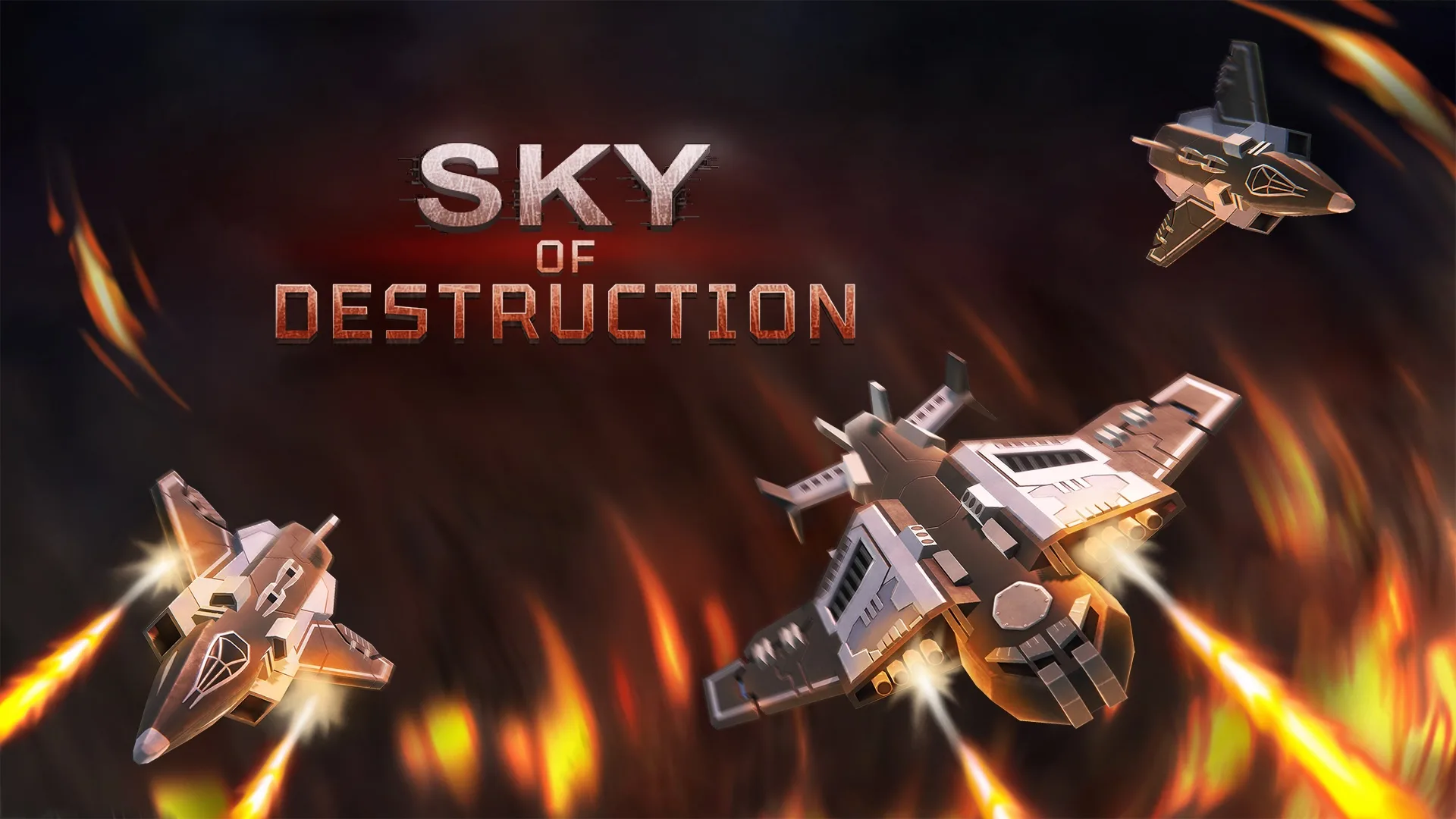Sky of Destruction arrives on Xbox as a top-down aerial combat game that blends the adrenaline of arcade shooters with tactical fleet management. Unlike traditional shoot‑’em‑ups that rely purely on reflexes, this game asks you to think about loadouts, aircraft positioning, and strategy while blasting through waves of enemies. It’s a game that wants to be both thrilling and tactical, and for the most part, it succeeds, though it’s not without its flaws.
Premise & Gameplay Overview
The premise of Sky of Destruction is straightforward: as a commander of a fleet of three aircraft, your mission is to eliminate enemy carriers, destroy ground installations, and survive against waves of hostile units. The twist is that your main carrier represents your life bar: even if individual planes are destroyed, as long as the carrier remains intact, the mission continues. This mechanic introduces tension while giving players room for error — it’s punitive but fair, allowing for aggressive tactics without immediate failure.
Before starting a mission, you assemble your squad. Each aircraft has unique attributes, such as speed, armor, firepower, and special abilities, along with a modular inventory system. Here’s where the tactical depth comes in: upgrades and weapons occupy differently shaped slots, and fitting them efficiently can significantly impact performance. This grid-based “Tetris-style” mechanic is intuitive enough for newcomers but provides satisfying strategic decisions for those who enjoy optimization. It’s rare to see such a methodical system paired with a fast-paced shooter, and it adds a layer of planning that keeps each mission engaging.
Unlocking new aircraft is tied to collecting blueprint fragments during missions. Once you complete a blueprint, a new plane is added to your roster, giving you more options for loadouts and strategy. This sense of progression encourages experimentation and replay, as different aircraft can drastically change how a mission is approached.
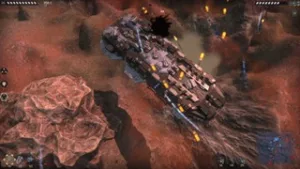
Combat & Tactical Mechanics
Combat is built around twin-stick controls, where one stick moves your aircraft and the other controls aim and shooting. The system is responsive and intuitive, letting players focus on strategy rather than fighting the controls. Swapping between your three aircraft mid-mission adds a dynamic element: if one plane is damaged or low on resources, you can switch to another, keeping the action flowing and offering multiple angles of attack.
Beyond basic shooting, Sky of Destruction lets you issue orders to your AI-controlled fleet. Commands like “attack,” “defend,” or “spread” allow you to shape the battlefield, making positioning and timing critical. For example, sending one aircraft to flank while another suppresses enemy fire can make the difference between a smooth mission and repeated failures. This level of tactical depth is impressive for a top-down shooter and provides a satisfying layer of strategy without overcomplicating the gameplay.
Missions themselves vary in objectives. Some require destroying key installations, others focus on eliminating waves of enemy aircraft, and some demand a mix of both. Optional side objectives, like collecting extra resources or protecting secondary targets, reward careful play and provide extra challenge for players seeking more than just the core objective. However, repetition can set in after multiple missions — while the maps and objectives are visually distinct, the underlying gameplay loop remains similar throughout.
The game’s difficulty is approachable but ramps up strategically rather than through sheer enemy numbers. The economy of upgrades is generous: resources and new gear are plentiful, meaning you rarely feel stuck. While this reduces frustration, it can make later stages feel easier than they should, especially for experienced players seeking a stiff challenge.
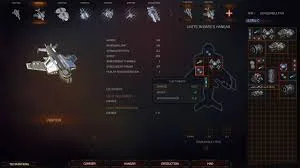
Visual Design & Presentation
Graphically, Sky of Destruction opts for clarity over spectacle. The top-down perspective ensures players can easily track their aircraft and enemies, and destructible environments add satisfying feedback when you hit the right target. Explosions, debris, and particle effects are visually impactful without overwhelming the screen, maintaining readability even in chaotic battles.
Aircraft and enemy designs are varied, with distinctive silhouettes that make targeting easier. While not hyper-realistic, the art style complements the gameplay, ensuring that you’re always aware of what’s happening on-screen. The node-based map that organizes missions is clean and intuitive, providing clear progression while encouraging exploration of optional objectives.
Performance on Xbox is solid. The game maintains a smooth frame rate even during heavy combat, and transitions between aircraft are instantaneous. The controls remain responsive throughout, ensuring that the tactical gameplay doesn’t suffer due to technical issues.
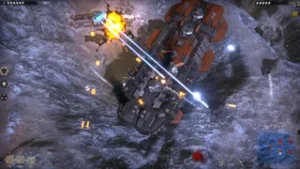
Audio Design & Immersion
Audio in Sky of Destruction is functional but uneven. Explosions and weapon effects land with satisfying impact, helping to communicate the chaos of battle. Engine sounds give each aircraft a sense of identity, and firing feedback is clear. However, ambient audio and music are underwhelming. The soundtrack rarely stands out, and the game doesn’t make strong use of sound to enhance tension or immersion. While this doesn’t ruin the experience, it does mean the audio occasionally fades into the background rather than amplifying the thrill of combat.
The tutorial is another weak point. Reviews and player feedback note that it fails to explain key systems, like how to fire multiple weapons or manage inventory efficiently. This means the early missions can feel confusing, and players may need to experiment through trial and error to fully understand mechanics. Once you get past this initial learning curve, the gameplay opens up, but a better onboarding experience would have made the game more accessible.
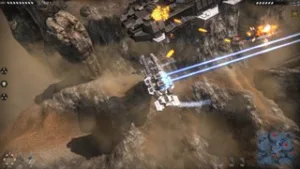
Progression & Replayability
Progression in Sky of Destruction is tied to both aircraft upgrades and new plane unlocks. Missions reward blueprint fragments, resources, and gear, allowing you to continually enhance your fleet. The modular inventory encourages experimentation, as fitting different weapons or abilities changes how each aircraft performs. This system gives motivated players plenty of room to optimize their squads for efficiency or playstyle preference.
Replayability comes from multiple sources. Players can replay missions to improve scores, complete optional objectives, or test out new aircraft and loadouts. However, for those less invested in optimization, replaying can feel repetitive, as the core mission structure doesn’t drastically change. Still, the game offers a satisfying balance for casual players and those who enjoy strategic depth in their shooters.
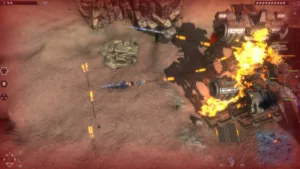
Verdict
Sky of Destruction on Xbox offers an engaging blend of arcade shooter thrills and tactical planning. The ability to switch between aircraft, manage loadouts, and issue commands to AI allies provides depth rarely seen in top-down shooters. Explosions, destructible environments, and responsive controls make the action enjoyable, while the modular inventory system rewards careful planning and experimentation.
Its main drawbacks are the underwhelming tutorial, inconsistent audio, and occasional repetition. These don’t ruin the experience, but they prevent it from reaching its full potential. For players who enjoy shooters with a strategic layer and don’t mind investing time in understanding the systems, Sky of Destruction delivers hours of explosive fun.
Overall
-
CX Score - 70%70%
Summary
Pros
-
Tactical depth via inventory-based loadouts and aircraft switching
-
Dynamic combat with AI fleet commands adds strategy beyond reflexes
-
Satisfying destruction effects and readable visual design
-
Smooth performance and responsive controls on Xbox
-
Unlockable aircraft and progression system encourage experimentation
Cons
-
Weak tutorial leaves early gameplay confusing
-
Generous upgrade system reduces late-game challenge
-
Audio design and soundtrack are underwhelming
-
Mission variety is limited, can feel repetitive over time
-
Minimal narrative or story engagement

